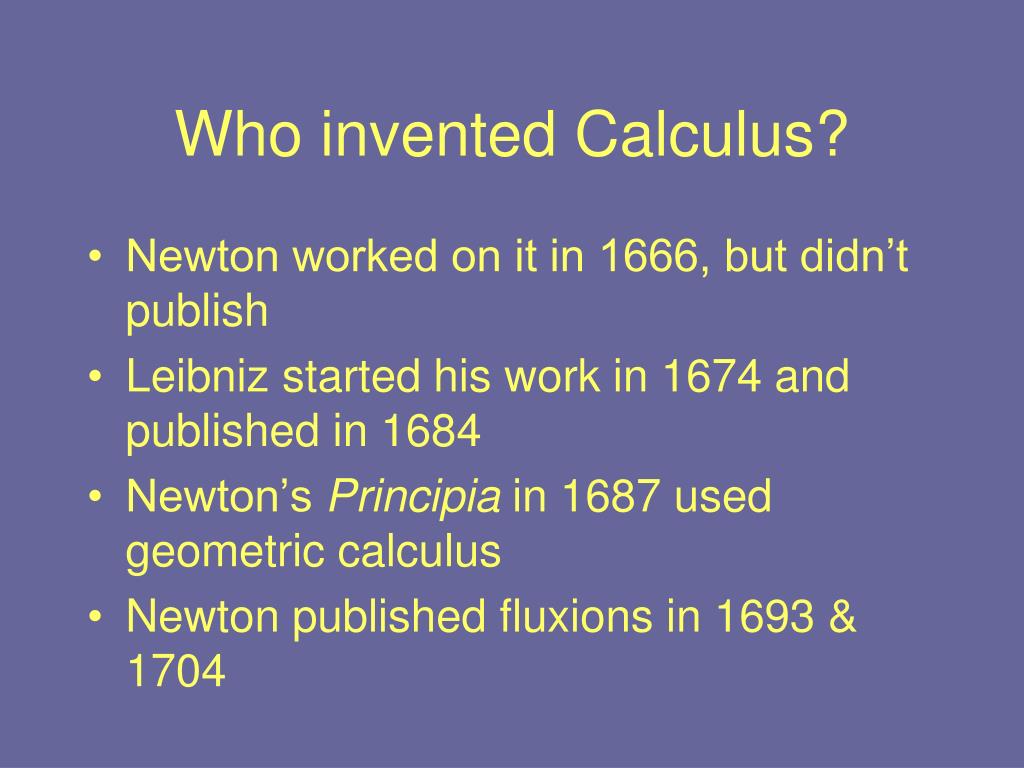

It is hard to understand it without having basic knowledge of differentiation and integration, which includes the terminologies mentioned in the definition.ĭifferentiation is a way to find the rate of change of a function, known as the derivative. It is the study of the relationships of limits, integrals, and derivatives. According to the definition proposed by, calculus is a specialized mathematics that allows one to calculate the behaviour of functions as they near points close to infinity.


This controversy further impeded the progress of mathematics in Britain as mathematicians didn’t utilize the developing system of calculus in their research.Īfter talking about the Newton-Leibniz Controversy, we have to talk about what calculus is exactly. But, since the paper of Leibniz was published first, people were confused about who “stole” the idea from the other. The controversy between these two mathematicians began in the 1770s: When Newton realized that Leibniz had developed a similar idea, he sent a letter to Leibniz to ensure that he would receive the credit for this, and even made accusations that Leibniz read some of his manuscripts to develop his own idea. Although the work was extremely obscure and difficult to understand, the title of his paper is a great summary of the basic idea of calculus. The name of the paper is known as “ A New Method for Maxima and Minima, as Well Tangents, Which is not Obstructed by Fractional or Irrational Quantities”. Leibniz, however, performed the research himself, devised this idea in the mid-1670s, and published his work in 1684. His first paper on Calculus was said to be written in 1669. The reason for not publishing his papers was unknown, but the fact that he did circulate them to his friends and used the technique discovered in his scientific works proved that these papers existed. This story of “who got there first” is called the Newton-Leibniz Calculus Controversy, which takes place in the mid-1660s.Īt that time, Newton claimed that he invented this system, and wrote several papers that he refused to publish. However, Newton is the one most often credited with this development. In this article, we will explore the story of the famous Calculus Controversy and the basic theories of calculus.Ĭalculus was primarily introduced by two scientists: Issac Newton and Gottfried Wilhelm Leibniz. But when they get to know the “story behind the scenes”, calculus can no longer be a monster.

It has no particular hero to whom we might (rightly or wrongly) ascribe or blame it.Many high school students struggle with learning Math, especially Calculus. What we call pre-calculus is simply a collection of material to prepare for the study of calculus. That having been said, he did contribute substantially. So Newton was not exactly producing his ideas out of thin air. the geometrical construction called "neusis"). Ideas concerning infinitesimals were around a long time ago, as were ideas about limits (e.g. Later mathematicians - especially Euler - further developed infinitesimal calculus. Also Gottfried Leibniz (who was accused of plagarising Newton) independently discovered some of these ideas at the same time. Note that some fundamental parts of calculus pre-date Newton. There are many more parts to calculus that Newton did not develop. When Newton needed some mathematical language in which to develop his ideas about mathematical physics he discovered, developed, formulated or (if you will) invented a collection of methods that today form an essential part of modern calculus: Such a small pebble was called (in Latin) a "calculus". In ancient times, well before Newton's day, small pebbles were used for counting, especially in abacuses. I don't know what I may seem to the world, but as to myself, I seem to have been only like a boy playing on the sea-shore and diverting myself in now and then finding a smoother pebble or a prettier shell than ordinary, whilst the great ocean of truth lay all undiscovered before me. Sir Isaac Newton, shortly before his death, it reputed to have said:


 0 kommentar(er)
0 kommentar(er)
